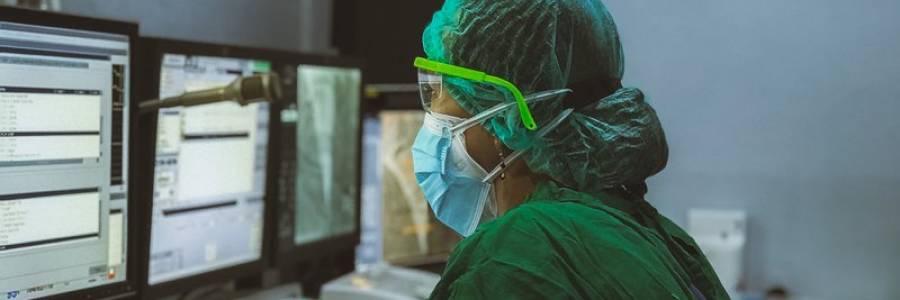Better Document Processing with OCR and RPA

OCR and RPA both play a role in document processing.
Businesses across numerous industries deal with tons of data every single day, but 60% to 73% of enterprise data remain unused for analytics, according to Forrester’s research. This means that businesses are not maximizing the data they collected, which could have helped them arrive at better decisions and improve their workflows. What they need is an intelligent data capture solution.
Most of the data collected by companies are in the form of surveys, PDFs, invoices, forms, images, and other paper documents. Data capture solutions, such as Optical Character Recognition (OCR) convert these documents into an editable and searchable format. OCR technology is also helpful in converting documents that contain typed or handwritten texts. The digitized data can either be directly used by the organizations or forwarded to an automation system, namely RPA.
Robotic Process Automation or RPA allows users to deploy bots that emulate a human’s actions to execute business processes more efficiently. RPA is often used to automate repetitive, mundane tasks that are usually much time-consuming.
OCR and RPA work hand-in-hand in automating the companies’ daily operational routines.
RPA and OCR: The Perfect Pair for Data Capture
OCR is a powerful tool that is indispensable in digital transformation. But, it comes with significant limitations. Most OCR engines do not have the ability to understand the complexity of the data from documents. RPA fills this void in the process.
In a nutshell, OCR deals with the data extraction from various documents, while RPA works by properly distributing the extracted data to the relevant systems, including CRMs and other types of corporate software. RPA enables the quick processing of financial transactions, updating databases, sending out messages, and other business processes.
Advanced solutions, such as DocDigitizer, combine these two technologies with a human-in-the-loop process to further improve the performance of data capture. This results in an enhanced document processing workflow that delivers with the speed of machine automation while maintaining quality through human intervention.
Uses of OCR Technology in RPA
It is important to note that the combination of RPA and OCR is not as simple as one plus one. RPA adds immense value to OCR. Normally, OCR is limited to processing highly structured documents. But with the help of RPA, it is able to process and analyze even unstructured data. To top it off, RPA bots can adapt to different scenarios and improve data capture and analysis processes, which OCR alone cannot do.
RPA and OCR are complementary technologies, and several businesses have discovered the advantage of this combination. Companies have started integrating them seamlessly to automate processes from end to end. RPA and OCR can create the sort of efficiency that innovative thinkers can turn into a competitive advantage.
Use Cases of Data Capture and RPA in Document Processing
Various industries have realized the benefits of combining OCR and RPA in automating their document processing. The increasing demand for digital transformation has also highlighted the need for intelligent data capture processes.
Here are some of the industries that have started integrating RPA with OCR and how it worked for them.
Invoice Processing for Accounting

OCR and RPA both play a role in document processing.
Invoice processing is a mundane and labor-intensive task that can exhaust your employees, consequently causing them to commit errors. This is especially the case when it comes to high volumes of documents to be processed. The OCR RPA technology can handle this burden by automating the processing of the invoices once they come in. Aside from extracting data from scanned documents, the relevant data is analyzed and entered into the related data fields of the accounting software or ERP.
A prime example is PepsiCo. As one of the largest entities in Europe, it is surprising that the organization still required staff to input invoice information and credit memo data. By deploying OCR and RPA, the company enhanced the existing process. A three-month test of the technology saw 40,000 pages of content processed, all representing five languages. Plus, human error was reduced to zero and the time spent on labor-intensive and repetitive tasks has been minimized.
PepsiCo reported that the software worked smoothly despite the complexity of the project and the multilingual nature of the documents. As a result, the company is now looking for ways to implement the same OCR-driven processes across all branches.
Sales or Purchase Order Processing
Sales managers often spend countless hours of research to gather all customer data from various systems and enter it into the company’s CRM or ERP. The finance and accounting department, on the other hand, needs to copy and input the data into the accounting software. This process could lead to data duplication and errors, affecting the accuracy of your data-based decisions. It also has a huge impact on your organization’s efficiency.
By combining OCR and RPA technology, businesses can automate complicated sales processes, such as order entry and invoice.
Recruitment Process

RPA and OCR in recruitment
When an organization puts up an ad for hiring, recruiters can expect lots of CVs for review and forms to be filled out. Organizations can use the combined OCR RPA technology to sort and classify the incoming CVs from the candidates. You can configure your software to watch out for relevant keywords, so you can easily find the right candidates. You can easily exclude those who do not fit the requirements to streamline the recruitment process.
OCR RPA can also facilitate the processing of scanned forms from new employees, such as employee information, contracts, and terms of employment. This technology is able to recognize the relevant data and input it into the relevant CRM for further data employee management.
OCR RPA platforms can automate the pre-screening questionnaires that candidates get when they are put on shortlists. More importantly, it can pick up on things that human recruiters might otherwise miss. For instance, HR workers might not notice keywords that indicate a person’s experience or that a person is a good fit for the role. Overall, RPA OCR optimizes the hiring process and simplifies the onboarding tasks.
Healthcare Data Processing

RPA and OCR in healthcare
Because of the pandemic, the number of documents that the healthcare industry has to process has spiked dramatically. Thanks to OCR, data extraction from health documents has become faster and efficient. Unfortunately, once the data has been extracted, it is a common practice in the healthcare industry to manually input the data into the system.
For example, OCR might be used to read and capture data from forms completed by patients in the hospital. Then, the staff members will manually input it into the CRM. But with the help of RPA, even this process can be automated. Once OCR has completed its part, the RPA can handle the data input, eliminating manual work.
Streamline Travel Requirements

RPA and OCR in healthcare
OCR benefits the travel sector by reducing the occurrence of common hassles. At the airport, for instance, people can simply insert their passports into OCR machines to capture personal and travel details. This expedites the process of clearing customs by reducing the waiting time for manual processing.
OCR RPA also helps business travellers easily confirm travel-related expenses for their employers. Users can simply take a picture of a receipt and automatically send the information to the company’s dedicated reporting platform where the extracted data will be processed by RPA bots.
Benefits of Data Capture and RPA in Document Processing
RPA and OCR are both stand-alone pieces of technology, but the value that they provide when they work together is a lot greater than when they are used separately. Some of the specific advantages of OCR RPA in document processing include:
- Reducing the burden of data validation departments and expediting the process – While OCR is a powerful tool, it is not enough to validate information extracted from documents. However, the combination of OCR and RPA with DocDigitizer’s human-blended approach helps organizations extend their benefits beyond data extraction. Advanced tools, such as DocDigitizer, can identify ‘suspicious’ data from documents and automatically send it to a human for further verification. This creates a more efficient process while ensuring information accuracy.
- Faster circulation of documents – The speed with which documents are processed and information is circulated is crucial in certain industries, like healthcare and finance. Knowing a person’s medical history by accessing the hospital database can help health practitioners provide quicker and better medical help.
- Automation of more processes- RPA and OCR working together has proven that technology can be used in more than one way. Aside from automating document processing, RPA OCR can also be used to automate other processes.
How to Integrate OCR with RPA to Improve Workflows
In a nutshell, OCR and RPA are two different systems, both designed to strengthen the effectiveness and speed of business processes. Integrating these two technologies may bring even better results for your company and add value to your business workflows.
To get started with your automation journey, DocDigitizer can help automate your data capture and streamline your processes. Our company uses a proprietary cognitive data capture engine equipped with a human-in-the-loop process to deliver the speed and scale of document processing automation that traditional OCR solutions can’t match.